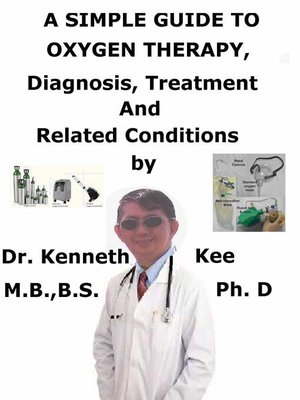
Sign up to save your library
With an OverDrive account, you can save your favorite libraries for at-a-glance information about availability. Find out more about OverDrive accounts.
Find this title in Libby, the library reading app by OverDrive.



Search for a digital library with this title
Title found at these libraries:
| Library Name | Distance |
|---|---|
| Loading... |
This book describes Oxygen Therapy, Diagnosis and Treatment and Related Diseases
Much has been mentioned about many countries such as Indonesia, India, Myanmar and countries with high Covid-19 incidence running out of oxygen cylinders and oxygen treatment for their Covid-19 affected patients.
The pneumonia that COVID-19 causes is likely to take hold in both lungs.
Air sacs in the lungs fill with fluid, restricting their ability to take in oxygen and causing shortness of breath, cough and other symptoms.
While most people recover from pneumonia without any lasting lung damage, the pneumonia linked with COVID-19 can be severe
Medical oxygen therapy is an important part of the treatment of patients with severe COVID-19.
Oxygen therapy is the administration of oxygen at a concentration of pressure higher than that present in the environmental atmosphere.
The air that people breathe contains about 21% oxygen.
Oxygen therapy is a treatment that supplies the patient with extra oxygen to breathe in.
It is also termed supplemental oxygen.
It is only accessible through a prescription from the doctor.
The patient may get it in the hospital, a medical location, or at home.
People who are treated with oxygen therapy often show improved energy levels and sleep, and better quality of life.
Some people only require it for a short period of time.
Others will require long-term oxygen therapy.
There are different types of methods that can supply the patient oxygen.
Some utilize tanks of liquid or gas oxygen.
Others utilize an oxygen concentrator, which draws oxygen out of the air.
The patient will be supplied the oxygen through a nose tube (cannula), a mask, or a tent.
The extra oxygen is inhaled in along with normal air.
Portable types of the tanks and oxygen concentrators can make it easier for the patient to move around while using the therapy.
What is Oxygen?
"I seem to be allergic to whatever that terrible smell is," said Gateman when the urge to sneeze had finally subsided.
"What terrible smell?"
"The air," said Gateman. "It smells...different."
"That's called oxygen," said Professor Boxley.
"Fresh air.
No cars, no buses, no factories; just pure, clean oxygen."
― Cuthbert Soup
Oxygen, a gas present in the air people breathe, is essential for the survival of human life.
Any deprivation of oxygen for more than a few minutes can be fatal.
Some people with breathing disorders cannot obtain sufficient oxygen naturally.
These people may require supplemental oxygen, or oxygen therapy.
The Lungs
My lungs, Breathe hard
Bring air to every part
Even if your air tubes are narrow
And the breath is shallow
As long as oxygen reach my cell
I shall still live my tale to tell
The dust from tiny fibers in the air
Has damaged my tube's inner lining and tiny hair
Tiny hairs that used to push dust and germs away
Are no longer moving and stuck in the clay
Of mucus, fibers, dust and dirt
How my air tubes really hurt
Each breath seems to be the last
Saved by the pressurized oxygen fast
Corticosteroids help to heal the scars
And bronchodilators help to expel the dust
Thank God for the new drugs
Temporarily removing those plugs
To my breathing and wheezing
At least I am still living
-An original poem by Kenneth Kee
TABLE OF CONTENT
Introduction
Chapter 1 Oxygen Therapy
Chapter 2 Oxygen and Uses
Chapter 3 Indications for Oxygen Therapy
Chapter 4 Benefits of Oxygen Therapy







